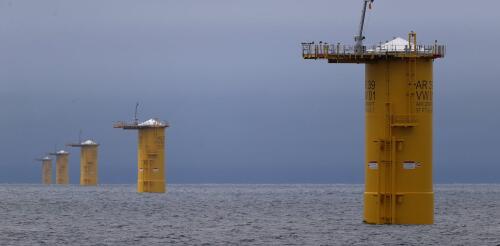North Atlantic right whales
It sounds like a crime show episode at sea: In late January 2024, federal regulators learned that a dead female North Atlantic right whale had been sighted near Martha’s Vineyard, Massachusetts. The whale was towed to shore, where more than 20 U.S. and Canadian scientists converged to perform a necropsy, or animal autopsy. On Feb. 14, the U.S. National Oceanic and Atmospheric Administration announced that the whale was #5120 in a catalog that tracks individual right whales. Further, the agency said, rope that had been deeply embedded in the whale’s tail had likely come from lobster fishing gear in Maine. Entanglement in fishing gear is a deadly threat to these critically endangered animals. Scientists estimate that before commercial whaling scaled up in the 18th and 19th centuries, there may have been as many as 10,000 North Atlantic right whales. Today, fewer than 360 individuals remain. Almost 90% of them have been entangled at least once. When whales become en...
As renewable energy production expands across the U.S., the environmental impacts of these new sources are receiving increased attention. In a recent report, the National Academies of Sciences, Engineering, and Medicine examined whether and how constructing offshore wind farms in the Nantucket Shoals region, southeast of Massachusetts, could affect critically endangered North Atlantic right whales. The Conversation asked marine scientists Erin L. Meyer-Gutbrod, Douglas Nowacek, Eileen E. Hofmann and Josh Kohut, all of whom served on the study committee, to explain the report’s key findings. Why did this study focus on such a specific site? The Bureau of Ocean Energy Management, which is part of the U.S. Department of the Interior and regulates offshore energy production, asked the National Academies to conduct this study. Regulators wanted to better understand how installing and operating offshore, fixed-bottom wind turbine generators would affect physical oceanographic pr...
Maine lobster fishermen received a Christmas gift from Congress at the end of 2022: A six-year delay on new federal regulations designed to protect critically endangered North Atlantic right whales. The rules would have required lobstermen to create new seasonal nonfishing zones and further reduce their use of vertical ropes to retrieve lobster traps from the seafloor. Entanglement in fishing gear and collisions with many types of ships are the leading causes of right whale deaths. Maine’s congressional delegation amended a federal spending bill to delay the new regulations until 2028 and called for more research on whale entanglements and ropeless fishing gear. Conservationists argue that the delay could drive North Atlantic right whales, which number about 340 today, to extinction. This is the latest chapter in an ongoing and sometimes fraught debate over fishing gear and bycatch – unintentionally caught species that fishermen don’t want and can’t se...

